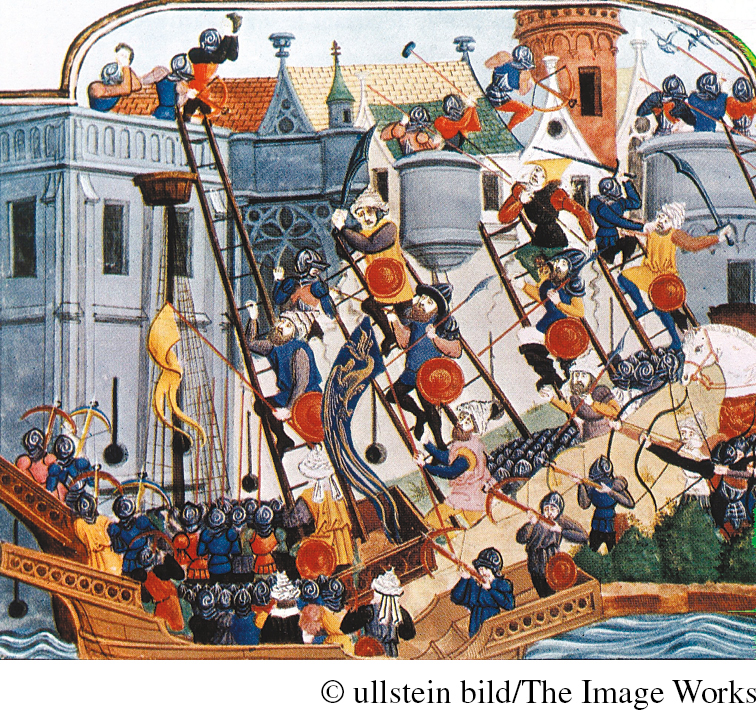ZOOMING IN: 1453 in Constantinople

On May 29, 1453, forces of the Muslim Ottoman sultan Mehmed II seized control of the great Christian city of Constantinople, an event that marked the final end of the Roman/Byzantine Empire and the ascendency of the Ottoman Empire. In retrospect, this event acquired a certain air of inevitability about it, for the Byzantine Empire had been retreating for almost two centuries before the steady advance of the Ottomans. By 1453, that once-
Constantine XI, the last Byzantine emperor, was well aware of the odds he faced. Yet his great city, protected by water on two sides and a great wall on a third, had repeatedly withstood many attacks and sieges. Furthermore, until the very end, he had hoped for assistance from Western Christians, even promising union with the Roman Church to obtain it. But no such help arrived, at least not in sufficient quantities to make a difference, though rumors of a fleet from Venice persisted. The internal problems of the Western powers as well as the long-
On the Ottoman side, enormous effort was expended with no assurance of success. In 1451, a new sultan came to the throne of the Ottoman Empire, Mehmed II, only nineteen years old and widely regarded as not very promising. Furthermore, some among the court officials had reservations about an attack on Constantinople. But the young sultan seemed determined to gain the honor promised in Islamic prophesies going back to Muhammad himself to the one who conquered the city. Doing so could also rid him of a potential rival to the Ottoman throne, who had taken refuge in Constantinople.
And so preparations began for an assault on the once-
In early April of 1453, the siege began, and it lasted for fifty-
And then, early the next day, the final assault began as Ottoman forces breached the walls of Constantinople and took the city. The Christians bravely defended their city, and Constantine discarded his royal regalia and died fighting like a common soldier. A later legend suggested that angels turned Constantine into marble and buried him in a nearby cave from which he would eventually reappear to retake the city for Christendom.
Islamic law required that soldiers be permitted three days of plundering the spoils, but Mehmed was reluctant, eager to spare the city he longed for as his capital. So he limited plundering to one day. Even so, the aftermath was terrible. According to a Christian eyewitness, “The enraged Turkish soldiers … gave no quarter. When they had massacred and there was no longer any resistance, they were intent on pillage and roamed through the town stealing, disrobing, pillaging, killing, raping, taking captive men, women, children, monks, priests.”10 When Mehmed himself entered the city, praying at the Christian altar of Hagia Sophia, he reportedly wept at seeing the destruction that had occurred.
Constantinople was now a Muslim city, capital of the Ottoman Empire, and Hagia Sophia became a mosque. A momentous change had occurred in the relationship between the world of Islam and that of Christendom.
Questions: What factors contributed to Mehmed’s victory? Under what circumstances might a different outcome have been possible?